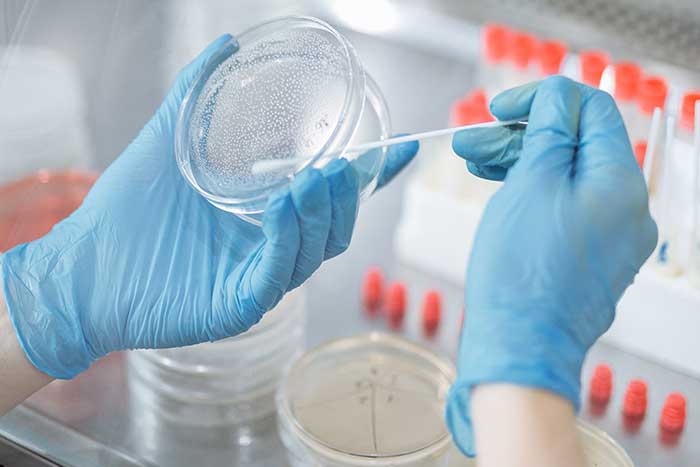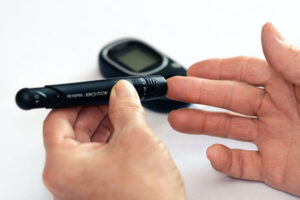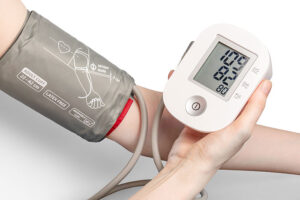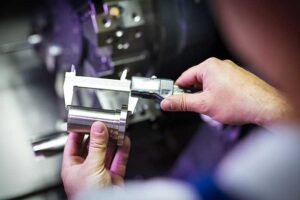
Biocompatibility testing is the best way to evaluate medical device safety. Through biocompatibility testing, the FDA confirms that either there are none or few local or systemic effects. Local effects may include burns, sensitivity at an insertion site, skin irritation, etc., while systemic effects include severe illness or damage to physiological systems. The FDA details how it evaluates and defines biocompatibility in alignment with ISO 10993-1 in a sixty-eight-page guidance document. To shed light on such a complicated process, we have summarized below the most pertinent points that apply to most medical devices.
How the FDA defines biocompatibility
The FDA defines biocompatibility as the ability of a device material to perform with an appropriate host response in a specific situation. For medical device development, biocompatibility refers to the risk assessment of materials that could pose harm to the human body. Meaning for any medical device that comes in direct or indirect contact with the human body, the FDA requires the manufacturer to determine the potential for harmful effects because of that contact.
How the FDA aligns with ISO 10993-1
The International Organization for Standardization (ISO) developed a multi-part standard (ISO 10993) for the biological evaluation of medical devices. Part 1 of this standard provides a framework for evaluating medical device biocompatibility and determining what tests, if any, are necessary. ISO 10993-1’s approach to evaluation focuses on considering existing knowledge before deciding if biocompatibility testing is needed. The standard also aims to reduce unnecessary animal testing by encouraging chemical testing and in vitro models instead of in vivo testing whenever possible. ISO 10993-1 and the FDA agree on seven general principles for biocompatibility evaluation.
- During medical device development, materials selection should account for whether the material has the possibility of having direct or indirect contact with the human body. If there is a possibility, medical device manufacturers will need to consider how the material was produced, including chemical composition, adhesives, and processing residuals.
- Biocompatibility evaluation should consider individual materials used in manufacturing, the final form of the device, leachable chemicals, and degradation products.
- When selecting appropriate testing endpoints, manufacturers should consider how the medical device contacts the human body, including frequency, duration, degree, and under what environmental conditions.
- In vitro and in vivo testing must be conducted under Good Laboratory Practice (GLP) regulations. The FDA has its own GLP regulations, apart from those outlined by ISO 10993-1, outlined in 21 CFR 58.
- When providing test data, submitters should include complete data so that reviewers can make independent conclusions. The FDA does not require the submission of test data if the testing occurred according to a recognized standard.
- If the manufacturer changes the device’s chemical composition, manufacturing process, physical configuration, or intended use, they will need to reevaluate biocompatibility for the possibility of additional testing needs.
- Biocompatibility evaluation should account for all available information such as nonclinical tests, clinical studies, postmarket surveillance, and guidance documents.
One area where the FDA and ISO standards differ is medical device mechanical failure. While ISO 10993-1 purposely excludes hazards from device failure, the FDA stresses the importance of identifying potential risks. The FDA states that if a device fails, it can release particles and debris or change the geometrical and physicochemical properties. If any of these events occur, it could alter the expected biological response. Therefore, the FDA recommends that manufacturers consider this when evaluating their medical devices for biocompatibility.
How to use risk management to determine biocompatibility
If your medical device contacts the human body directly or indirectly, it is safe to assume that you will need to evaluate it for biocompatibility. Additionally, if your device is a Class II device and falls under Special Controls, there may be specific biocompatibility requirements for your device.
The FDA and ISO 10993-1 take a risk management approach to evaluate medical device biocompatibility. At the end of the process, you will be able to identify the biological risks of your device and what information you need to mitigate those risks, including biocompatibility test results. This process involves the following four steps:
Risk assessment
Risk assessment evaluates the finished device and looks at its materials, process, and clinical use to determine potential risks. The final material or medical device should not produce local or systemic effects, be carcinogenic, or produce adverse reproductive or developmental effects.
It is important to note that the FDA only looks at the finished device and does not approve individual materials used in fabrication. The reasoning is that different materials could elicit different reactions based on neighboring components. As a result, manufacturers must assess each material, part processing, manufacturing methods, and possible residuals from manufacturing aids.
Identification of potential risks
Once the assessment is complete, medical device manufacturers can begin identifying potential biocompatibility risks. When identifying risks, you must analyze physical and chemical properties that may elicit an unwanted tissue response. These properties include surfaces, geometry, particulates, and external forces such as thermal or electromagnetic. A proper assessment of the manufacturing process is also necessary. If you change any part of production or post-production, you will need to reassess the risks. Design changes could alter the chemical or physical properties of the device and therefore affect biocompatibility.
Consideration of available information
After identifying the potential biocompatibility risks, the manufacturer will want to gather and analyze any available data regarding those risks. Sufficient analysis of available information can reduce your testing burden. Information for consideration includes publicly available literature, clinical experience, previous animal studies, medical device standards, and predicate devices.
Submission and interpretation
The final step involves identifying any informational gaps and developing a plan for filling in those gaps via biocompatibility testing or other evaluations. In the final FDA submission, the manufacturer must identify any adverse effects or toxicities found during testing. They will also need to include additional information that will provide context for how to interpret the results based upon the intended use and within the benefit-risk framework. For example, in a life-saving device where the alternative is patient death, the benefits of using the device outweigh the potential toxicities identified during testing.
Types of biocompatibility testing
The FDA provides a framework for biocompatibility testing using biological endpoint assessments. In the simplest of terms, an endpoint is a way in which a material can be toxic. These endpoints consider the type of contact, frequency, and duration of exposure. The FDA breaks down body contact based on category and contact. Categories include surface device, external communicating, and implant device. Contact points depend on their category. For example, an implant device would have a contact point of blood, tissue, or bone but would not have a contact point for intact skin. Contact duration is considered either limited, prolonged, or permanent, with less than 24 hours being the shortest time and longer than 30 days being the longest. Based on the category, contact, and duration, the FDA has a matrix for determining what biological effects you may need to test. The FDA outlines thirteen different types of testing for specific biological effects. These are:
Cytotoxicity
Sensitization
Irritation or intracutaneous reactivity
Acute systemic toxicity
Material-mediated pyrogenicity
Subacute/subchronic toxicity
Genotoxicity
Implantation
Hemocompatibility
Chronic toxicity
Carcinogenicity
Reproductive/developmental toxicity
Degradation
Testing looks for reactions that may occur as the device or material breaks down over time.
As we have laid out above, biocompatibility is nuanced and there is no one size fits all solution for manufacturers. Clearly understanding your medical device’s function, manufacturing process, and materials early in the development process can get you started down the right path for identifying what biocompatibility testing may be needed. If you are unsure what biocompatibility testing your medical device requires or would like some expert advice while navigating the regulatory process, contact us and we would be happy to help.
Get a Free Quote
About Synectic Product Development: Synectic Product Development is an ISO 13485 certified, full-scale product development company. Vertically integrated within the Mack Group, our capabilities allow us to take your design from concept to production. With over 40 years of experience in design, development, and manufacturing, we strive for ingenuity, cost-effectiveness, and aesthetics in our designs. Learn more about our medical device design services and see how we can help your next project.


